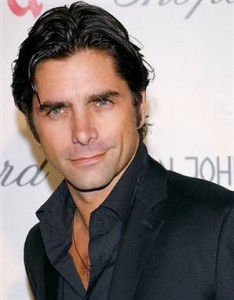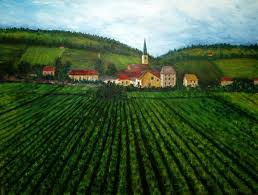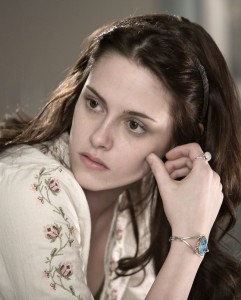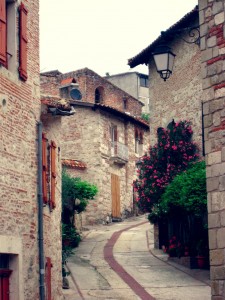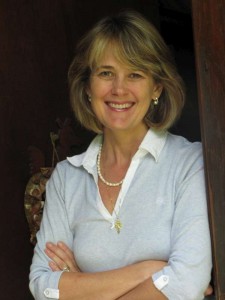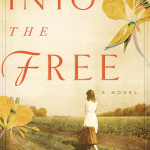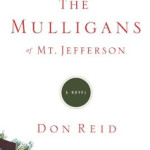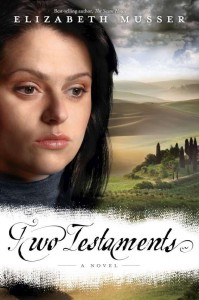 Elizabeth Musser’s second Secrets of the Cross novel continues the intrigue
Elizabeth Musser’s second Secrets of the Cross novel continues the intrigue
Two Testaments
David C. Cook
Synopsis
The slightest spark will ignite an explosion. The tinderbox of broken political and racial relations in France and Algeria provides plenty of kindling. And the growing friction, especially in Algeria, will soon combust. A tentative ceasefire offers little to cool the heat.
And in the midst of the turmoil, Gabriella Madison guards the orphans in her care, while battling jealousy when Anne-Marie Duchemin, David’s former flame, arrives in Castelnau, France. As they protect the little ones in their care amid rising discomfort in the community with the multi-cultural orphanage, each wonders who David will choose.
Meanwhile, David is trapped in Algeria, caught in the turmoil of a country gone mad. He seeks a way to guard his life and, at the same time, protect the refugees he came to help. And escape seems impossible.
Unable to predict what lies ahead, Gabriella and David learn that in life, waiting is the hardest part.
The answers lie in two testaments.
Enjoy meeting David & Anne-Marie
David Hoffman
Here’s what Gabriella Madison, the other protagonist in both novels, has to say about David Hoffmann in the opening scenes of Two Crosses:
She watched a moment longer, until a lanky young man in his midtwenties walked briskly up the street. There was no mistaking the next client who entered the boulangerie. Gabriella had recognized him the first time she saw him buying bread a few days earlier, from the description of the other boarders. This was David Hoffmann, the university’s handsome American instructor. Gabriella strained to get a closer look…
…When David Hoffmann rose to his feet, every eye in the church followed him. His frame was lean and athletic, and his hair and eyes were jet black. He appeared calm and sophisticated for such a young professor.
Stephanie jabbed Gabriella in the ribs. “He is one charming man, I heard. But very distant.”
She had found it hard to concentrate on his lecture that morning. He had seemed discerning and profound, and his dark, deep-set eyes made her feel uncomfortable. Were they dark blue or coffee brown or jet black? In any case, they were penetrating. The other girls called him handsome and mysterious, but Gabriella saw something different. Brilliant and sad, was her conclusion.
And here’s how Anne-Marie Duchemin describes David in one of the opening scenes of Two Testaments:
The door swung wide, and David stood in the opening and paused. Anne-Marie swallowed hard and met his eyes. His six-foot-one-inch frame had filled out so that he looked every bit the grown man he was. His black eyes were softer than she remembered, and the tenderness she saw in them scared her even more. His coarse black hair was swept back away from his face, but one wisp tickled his forehead. A black leather jacket hung loosely over his shoulders.
As he leaned down to set a suitcase on the floor, she noticed his bandaged arm. He straightened up, not moving forward, as if waiting for her invitation. His mouth whispered Anne-Marie without making a sound.
Oh, you are a beautiful man, she thought…
Actor/famous person
I never think of anyone famous when creating a character, but I searched through photos of actors, and John Stamos came closest to looking like David. David is tall and lanky, with very dark, deep-set eyes and black hair. He often has a very cynical look about him.
David is a study in contrasts. He’s brave and bitter, bright and cynical, loyal to a cause and yet loyal to know one but himself. He is spurred on by revenge and yet he often performs acts of kindness and courage. He presents himself as distant and charming. He lives a secret life, but it is to protect others. His character changes and develops and deepens throughout Two Crosses and Two Testaments.
Quirk
In one scene, David loses his very poised presence because he is served rabbit for dinner. He panics. This isn’t just a quirk. It is part of his past that is gradually revealed throughout the novels.
Your inspiration for the character
As with Gabriella, my inspiration started long ago when I was cataloguing books in the seminary library. I imagined a complex man with secrets and scars who was, in fact, involved in a noble mission. I had a professor in college who looked very much as I described David physically. He was also extremely bright, intriguing and cynical. He was very hard to get to know, but an excellent professor. So David started out based on this man, but he evolved and deepened throughout the writing of the trilogy.
Anne-Marie Duchemin
Anne-Marie’s physical description changes dramatically in the course of the novel. Here are several scenes that show the ‘before’ and ‘after’:
Anne-Marie watched Moustafa hurry a young man into their building, and she quickly limped to the mirror that hung on the flaking wall. She felt a pang of despair as her reflection stared back at her. Her black hair drooped loosely upon her shoulders. She cringed at the way her protruding cheekbones accentuated her deep-set and dull eyes. Her skin looked pale and almost yellowish. She turned away.
A thick gray sweater hung impossibly over her thin frame, but she felt completely naked. David Hoffmann was about to walk back into her life, and she was not ready.
She was but a wisp of a woman, thin, malnourished, limping badly. Suddenly Gabriella remembered what David had told her. Moustafa fears she will die. Indeed, Anne-Marie looked as if she had been battling death for a long time. A wave of pity swept over Gabriella as she watched the feeble young woman caress the cheek of her little girl.
Anne-Marie smoothed the skirt she wore. It was a light wool black-and-white herringbone that Sister Rosaline had fished out of the clothes closet in the basement. When Anne-Marie had pulled it around her waist and fastened it, she had blushed at Sister Rosaline’s enthusiastic ooh là.
“It fits you like a glove,” the nun said. “You look like a model.”
She scurried back to the closet, returning with a white blouse and a matching herringbone jacket. “It’s all from the same wealthy lady. Look at you, Mademoiselle Duchemin. You look like you’ve just stepped out of one of those fancy designer shops in Paris.”
It was true that the clothes became her. It was like a small miracle. Even the black leather pumps that Sister Rosaline’s sharp eye had uncovered fit comfortably with a little cotton stuffed in each toe. She was clothed like a princess, and she hadn’t paid a centime. This place seemed made for miracles, as Ophélie said.
Anne-Marie was only two or three years older than the other girls, yet it seemed to Gabriella that she surpassed them in knowledge and wisdom by many more. And dressed in the smart outfit that Sister Rosaline had rescued from the clothes closet, Anne-Marie was beginning to look stunning and sophisticated.
Actress/famous person
Again, I never think of anyone famous when creating a character, but a friend who has read the novels suggested that Anne-Marie (referring to the woman on the cover of Two Testaments) looks a bit like Kristen Stewart. Anne-Marie would never have a seductive look. In fact, she would look like a survivor. I tried to find a photo of Kristen that communicated that quality of strength in the midst of suffering.
Strengths and weaknesses
Anne-Marie has many things to overcome. She is ashamed of her past as an unwitting traitor to her country and family and considers herself a stained woman, incapable of being forgiven by God. But she is kind and strong and courageous and throughout both novels, she fights for those she loves. Not only do her physical looks change through the course of the novel, but also there is a dramatic change in her inner character. She asks very pointed questions about faith and learns about the meaning of the words forgiveness and trust. She is forced time and time again to put these words into practice. In the end, she does much more than simply survive.
Quirk
Anne-Marie is not a quirky character. As I’ve said, her goal is to survive, and then, she triumphs over suffering.
Your inspiration for the character
As I researched Algeria’s War for Independence from France and interviewed pied-noir women, I began to create Anne-Marie’s character—a lovely young woman, forced to flee her country, but also tangled up in the war movement. I realized that the people involved in the war were complicated, thus I made Anne-Marie complicated, often faced with impossible circumstances. I wanted to show through her some of the difficulties that single mother’s face as well as the prejudice of being from a minority.
Background to the story
Love for war’s victims keeps them apart. Will love for each other see them through?
The slightest spark will ignite an explosion. And the tinderbox of broken political and racial relations in 1960s France and Algeria provides plenty of kindling. In the midst of the chaos, Gabriella Madison guards the orphans in her care while battling jealousy with Anne-marie Duchemin, David’s former flame who has recently arrive in Castelnau, France. Even more problems arise when the townspeople start expressing their discomfort with the multicultural orphanage. They want it shut down…permanently.
Meanwhile, David is trapped on the other side of the Mediterranean, caught in the turmoil of a country gone mad. He seeks a way to guard his life and, at the same time, protect the refugees he came to help. But even if he accomplishes his mission, can he get out of Algeria alive?
ELIZABETH GOLDSMITH MUSSER, an Atlanta native and the bestselling author of The Swan House, is a novelist who writes what she calls ‘entertainment with a soul.’ For over twenty years, Elizabeth and her husband, Paul, have been involved in missions work with International Teams. They presently live near Lyon, France. The Mussers have two sons and a daughter-in-law.
To learn more about Elizabeth and her books, and to find discussion questions as well as photos of sites mentioned in the stories, please visit www.elizabethmusser.com
Relz Reviewz Extras
Character spotlight on Gabriella Madison
Visit Elizabeth’s website and blog
Buy Two Crosses from Amazon and Koorong

